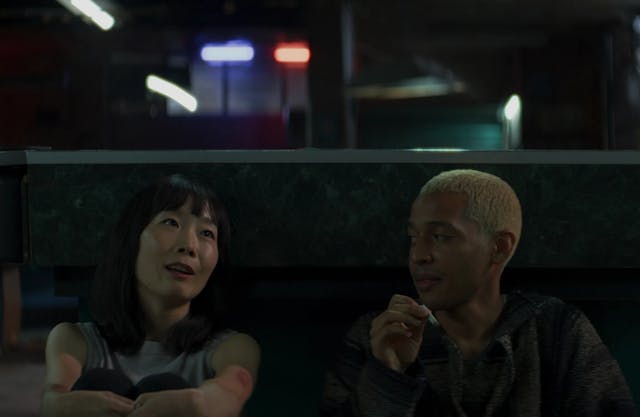When Kubrick Met Brando: The "One-Eyed Jacks" Chronicles

What would a Western directed by Stanley Kubrick look like? Any movie buff wonders. We will never know, but we were pretty close. After "Paths of Glory" (1957) established the young director as a talent to watch, Kubrick got the kind of call that every up-and-coming helmer dreams of. At the height of his power and fame, the legendary actor Marlon Brando was on the other end of the line. The best actor of the moment wanted him for his next movie.
Brando's Bluff In The "One-Eyed Jacks" Game
Marlon Brando was the figurehead of an artistic revolution in the '50s. He was the most visible representative of the acting style known as The Method, which took performing arts by storm. Far from the theatrical impulse to play up for those in the back of the auditorium, it aimed to achieve emotional truth, pushing the actors to connect with the inner motivations and feelings of characters.
Brando struck years before a new generation made it the common language of American acting: Robert De Niro, Al Pacino, and Dustin Hoffman are all method actors. Brando shook audiences with Tennessee Williams' "A Streetcar Named Desire" on Broadway. In 1951, they took the role to the big screen with director Elia Kazan. He got his first Oscar nomination with his blistering performance as brutish Stanley Kowalski. By 1958, he had three more nominations and one statuette for another Kazan collaboration, "On the Waterfront" (1954).
At the top of his career, Brando could get anything his heart desired. He wanted to star in an adaptation of the novel "The Authentic Death of Hendry Jones," a revenge drama inspired by the real-life story of Pat Garret and Billy The Kid. He had a script by Rod Serling - before finding his career-defining project as the creator of the TV series "The Twilight Zone." A very young Sam Peckinpah, years before his own revolutionary western "The Wild Bunch" (1969), did a second version.
Hollywood was in flux on the business front. The big studios aimed to lower risks by backing film production of projects developed by independent companies led by big stars. Brando started Pennebaker, Inc. with his famously unreliable father, Marlon Brando Sr. "One-Eyed Jacks" was the first project of their boutique company.
When Stanley Met Marlon
Kurbrick's involvement with "One-Eyed Jacks" was brief. The star-producer and the director-for-hired clashed over many issues, from the quality of the script to casting. Brando was committed to giving the pivotal role of "Dad" Longsworth to Karl Malden, his friend and frequent costar. Kubrick wanted Spencer Tracy or Henry Fonda. The director disliked the script, and a new version by Guy Trosper Calder Willingham came along. After six months of butting heads, Kubrick exited the project. Later, he would share his conviction that Brando wanted to direct the movie and was just killing time to corner the studio into approving.
But don't cry for Stanley. Kubrick rebounded gloriously, ironically enough, under the wig of another actor exerting unmeasurable power. Production on "Spartacus" had started, with Anthony Mann in the director chair. After a week of shooting, the star was unsatisfied with the results. He pushed Warner Brothers to fire Mann and bring Kubrick as director-for-hire. The rest is history. The movie opened in October 1960 and turned into a massive success. "One-Eyed Jacks" was still months away from seeing the projector's light. Paramount finally released it on March 30, 1961.

"One-Eyed Jacks" is slang to identify wild cards in poker, used here to describe how the characters gamble with their lives - and each other - for greed or revenge. It all starts rather chummy. A trio of bandits are robbing a bank in Sonora, Mexico. "Dad" Longworth (Malden) is the oldest and the gang's leader. Rio (Brando) is his right-hand man, a young buck with a fast trigger and a short fuse. The third robber is cannon fodder and goes down soon enough when the law catches up with them in a brothel.
Dad and Rio run towards the desert but end up surrounded. The older man sneaks away, supposedly to get fresh horses. Once he is out of reach of the law enforcement officers, he turns his back on his accomplice and flees, taking the bounty with him. Rio goes to jail for five years. He escapes and vows to make Dad pay for his betrayal.
Directed by Marlon Brando
Paramount did not know what they were getting into by agreeing to let Brando direct the movie. Production went over budget and schedule, with shooting extending to nine months. There are plenty of stories about how Brando would keep cast and crew waiting for hours until the sea would offer the kind of waves that fit his vision. When not waiting for nature to deliver the goods, he would put actors through their paces, doing the same shot over and over again.
Oddly enough, this exacting and obsessive style is similar to Kubrick's. The difference is that Stanley achieved independence, allowing him to work leisurely. He made indie films within the studio system, shooting near his home in England, away from meddling executives. More importantly, he always delivered a final cut, sticking to budget and studio requirements, sometimes to his detriment. His swan song, "Eyes Wide Shut" (1999), arrived in theaters posthumously, with overly CGI elements covering the naughty bits in the infamous orgy scene. Conspiracy buffs would speculate he died without approving the changes. The truth is, that was the director's cut. He was one of the few directors who enjoyed having a final-cut clause in his studio contracts for most of his career.
After going over budget and over-schedule, Brando delivered a version with a running time of almost five hours. It was unreleasable by any commercial standard. There are conflicting reports about his exit from the project. Some say the studio locked him out of the editing room. Others say he walked away, bored with paring down the movie to a manageable cut. He did participate in reshoots of a new ending, marginally "happier," which closes the film.
Still, "One-Eyed Jacks" was a washout for Paramount. Budgeted at 2 million dollars, it cost over 6 million. It barely made over 4 million. Furthermore, the movie fell into the public domain when the copyright holders did not renew it in time. That is adding insult to injury.
"One-Eyed Jacks" Plays a Losing Hand
The flameout could not happen to a better movie. Brando may have been a nightmare on the set, but "One-Eyed Jacks" is beautiful. Consider how his worst offenses as a director are marks of genius in people like Terrence Malick or David Fincher.
The movie is a visual feast. It was one of the last films Paramount produced with their proprietary VistaVision cameras. The technology was developed as an alternative to the widely used Cinemascope. You can see it in action in eye-opening classics such as "The Ten Commandments" (1956) and "Vertigo" (1958). Still, by the late '50s, rival technology like Technicolor had improved enough to make VistaVision's cost too expensive. It was so worth it. Cinematographer Charles Lang deservedly received an Oscar nomination 28 years after winning for "A Farewell to Arms" (1932). He lost to Daniel L. Fap's work on "West Side Story" (1961). Lang had a total of 18 nominations.
All the downtime waiting for the perfect wave was worth it. Brando does for the California Coast what John Ford did for Monument Valley, turning the landscape into a mythical realm. The better to serve as background to a story with obvious oedipal undertones. It's not by chance that Karl Malden's treacherous father figure is called "Dad," and Brando's betrayed accomplice is constantly called "Kid." Knowing that Papa Brando brought a lot of trouble to young Marlon gives an extra frisson to the proceedings.
More intergenerational grief comes from the character arch of Louisa (Pina Pellicer), Longworth's adoptive daughter, who falls for Rio and becomes an unwilling pawn in their revenge plot. Tragically, Pellicer would die by suicide in 1964, never quite fulfilling the promise of her talent. Kathy Jurado gives a beautifully calibrated performance as Louisa's mother, torn between loyalty to her daughter and her husband's wishes.
Justice for "One-Eyed Jacks"
Most cursed films get reevaluated in time, and "One-Eyed Jacks" is not the exception. In 2016, Martin Scorsese's Film Foundation, in collaboration with Steven Spielberg and NBC-Universal, restored the movie to its original glory. Universal is in the mix because the media conglomerate acquired the Paramount Library. The restoration premiered at the Cannes Film Festival and jumpstarted a wave of appreciation for the film. It peaked in 2018 when the Library of Congress included it in the National Film Registry.
It's a shame Brando did not live to see critics and audiences embracing his mournful take on the Western genre. He died in 2004 as a victim of pulmonary fibrosis. He never directed another movie again. This is a unique film, with the form of an old-fashioned studio production and the vital spirit of a New Hollywood. After all, Marlon was the best director to bring "One-Eyed Jacks" to life.
Watch “Lonely”
“Lonely” is a powerful reminder that no one is ever truly alone, and there is always someone out there who cares and wants to help.
Stream NowWant to get an email when we publish new content?
Subscribe today




























